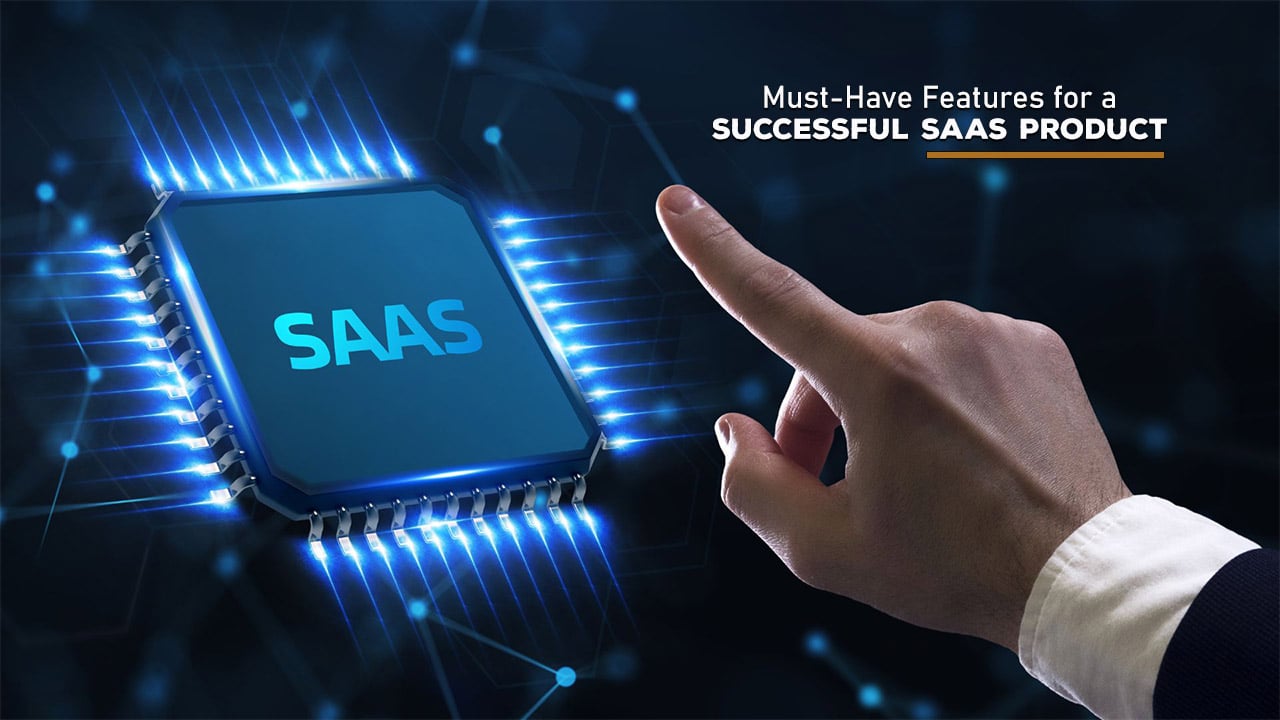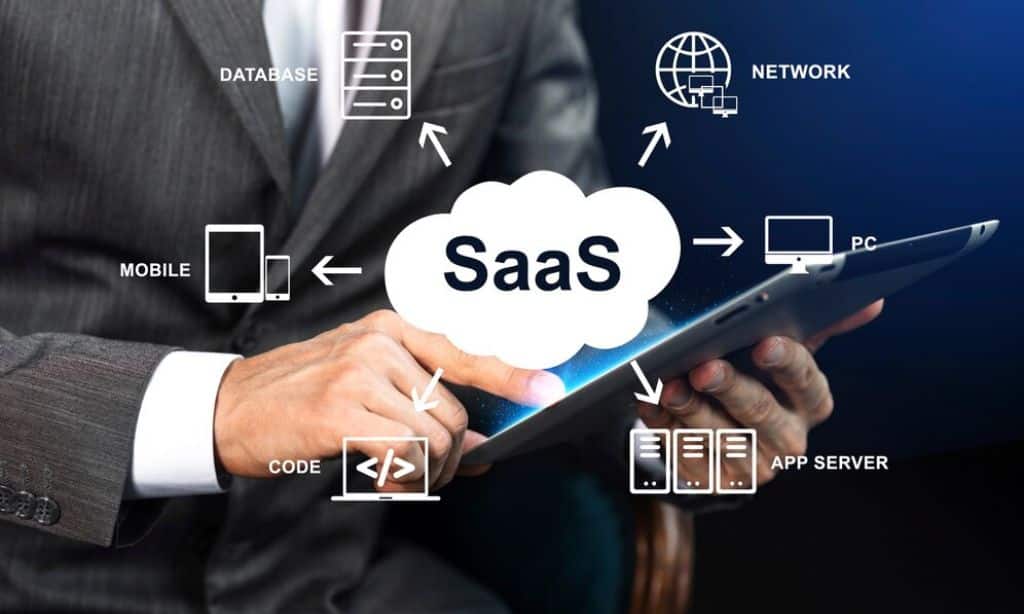Hey there, future SaaS superstar! Buckle up, because we’re about to blast off into the exciting universe of Software as a Service (SaaS). Whether you’re a tech-savvy entrepreneur with stars in your eyes or a seasoned business owner looking to rocket your company into the digital age, you’re in for an adventure!
Imagine a world where powerful software tools are as easy to access as your favorite streaming service. No more clunky installations or expensive hardware – just click, log in, and boom! You’re ready to conquer the business world. That’s the magic of SaaS, and it’s taking over faster than you can say “cloud computing“.
But here’s the kicker: the SaaS galaxy is expanding at warp speed. By 2024, experts predict the global SaaS market will hit a mind-boggling $307 billion. That’s a lot of zeros, and a lot of opportunity. But with great opportunity comes great competition. How do you make sure your SaaS product doesn’t get lost in the cosmic dust?
Fear not, intrepid space explorer! We’ve got your back. In this ultimate guide, we’re going to unveil the 15 essential features that will transform your SaaS from a twinkling star to a blazing supernova. These aren’t just any features – they’re the secret sauce, the special ingredients, the je ne sais quoi that separates the SaaS superstars from the one-hit wonders.
So, grab your favorite caffeinated beverage, get comfy, and prepare for liftoff. By the time we’re done, you’ll have a galaxy-brain understanding of what it takes to create a SaaS product that doesn’t just meet expectations – it shatters them into stardust. Ready to make your mark on the SaaS universe? Let’s go! 🚀
The SaaS Landscape: A Bird’s Eye View
Before we dive into our 15 essential features, let’s take a moment to survey the SaaS landscape. Understanding the current trends and projections will help put our feature list into context.
| Metric | Value | Source |
| Global SaaS Market Size (2024 projection) | $307 billion | Gartner |
| Average Number of SaaS Apps Used per Organization | 137 | Blissfully |
| Percentage of Businesses Planning to Increase SaaS Spending | 73% | Deloitte |
| Average Cost of a Data Breach | $4.24 million | IBM |
| Percentage of Customers Who Care About Data Privacy | 84% | Cisco |
| Projected CAGR of SaaS Market (2021-2026) | 11.7% | Gartner |
As you can see, the SaaS market is booming, but it’s also becoming more complex. Organizations are using more SaaS apps than ever, which means integration and security are crucial. At the same time, customers are increasingly concerned about data privacy. Keep these trends in mind as we explore our essential features – they’ll help you understand why each feature is so important in today’s SaaS landscape.
Now, let’s blast off into our 15 essential features!
1. User-Friendly Interface: Your Digital Welcome Mat
Imagine walking into a store where nothing is labeled, products are scattered randomly, and the staff speak in riddles. Frustrating, right? Well, that’s exactly how users feel when they encounter a poorly designed SaaS interface. In the digital world, your interface is your storefront, your staff, and your product all rolled into one. Get it right, and you’ve got happy users who stick around. Get it wrong, and… well, there’s always another SaaS fish in the sea.
Why It Matters
Let’s talk numbers for a second. According to a mind-blowing study by Forrester, a well-designed user interface can boost your website’s conversion rate by up to 200%. But wait, it gets better! A top-notch UX design could skyrocket those conversion rates up to 400%. That’s not just impressive – it’s game-changing!
But here’s the real kicker: the cost of poor UX. Another study found that, on average, every dollar invested in UX brings 100 dollars in return. That’s an ROI of 9,900%! Imagine if your 401(k) performed like that – you’d be sipping piña coladas on your private island in no time!
Key Components of a User-Friendly Interface
- Clear Navigation Menus: Your Digital Roadmap Think of your navigation menu as the map of your SaaS city. Users should be able to glance at it and know exactly where they need to go. Use clear, descriptive labels. Avoid clever but cryptic names. “Analytics” is better than “Number Cruncher 3000,” no matter how cool the latter sounds.
- Logical Layout: The Flow of Digital Traffic Arrange your features and functions in a way that mirrors how users actually work. Group related items together. Put frequently used features front and center. It’s like arranging a kitchen – you want the spices near the stove, not hidden in the basement.
- Consistent Design Elements: The Familiar Face Consistency in color schemes, button styles, and typography isn’t just about looking pretty. It’s about creating a sense of familiarity and predictability that makes users feel at home. It’s like walking into your favorite coffee shop – you know where everything is, and it just feels right.
- Mobile Responsiveness: The Anywhere, Anytime Promise In a world where people check their phones 96 times a day on average (that’s once every 10 minutes!), mobile responsiveness isn’t optional – it’s essential. Your SaaS should look and work great whether it’s on a 27-inch monitor or a 5-inch phone screen.
Pro Tips for Creating a User-Friendly Interface
- Conduct Regular User Testing: Don’t guess what users want – ask them! Use tools like UserTesting or Hotjar to get real feedback from real users. It’s like having a focus group at your fingertips 24/7.
- Use Heat Mapping Tools: Tools like Crazy Egg can show you exactly where users are clicking (or not clicking) on your interface. It’s like having X-ray vision into user behavior. You might be surprised to find out that fancy button you spent hours designing is being ignored!
- Implement A/B Testing: When making significant changes, test them with a small group first. Tools like Optimizely make this easy. Remember, data beats opinions every time. Your favorite color might be hot pink, but if users prefer blue, blue it is!
- Prioritize Accessibility: Ensure your interface works for users with disabilities. It’s not just good ethics – it’s good business. Plus, in many countries, it’s the law. Think of it as building ramps alongside staircases in your digital space.
- Embrace White Space: Don’t be afraid of empty space. A cluttered interface is like a cluttered desk – it’s hard to find what you need and easy to get overwhelmed. Give your design room to breathe!
Remember, your interface is often the first thing users see. Make it count. Because in the world of SaaS, love at first sight isn’t just a romantic notion – it’s a business strategy. A great interface can be the difference between a user thinking “Ugh, do I have to use this?” and “Wow, I can’t wait to dive in!”
2. Robust Security Measures: Fort Knox for the Digital Age
Picture this: You’ve created an amazing SaaS product. It’s sleek, it’s powerful, it’s everything your users have ever dreamed of. But there’s a catch – it’s about as secure as a piggy bank with a rubber stopper. In today’s digital landscape, that’s not just a problem – it’s a ticking time bomb.
Why It Matters
Let’s face it – we live in an age where data breaches make headlines almost daily. From small startups to tech giants, no one is immune. Your users are entrusting you with their valuable data – protecting it isn’t just a feature, it’s your sacred duty.
Here’s a wake-up call: according to IBM’s Cost of a Data Breach Report, the average cost of a data breach reached a staggering $4.24 million per incident in 2021. That’s not just a number – for many companies, it’s an extinction-level event. It’s like leaving your front door wide open in a neighborhood full of professional thieves – sooner or later, someone’s going to walk off with your TV.
But it’s not all doom and gloom! A survey by Cisco found that 84% of customers care about the privacy of their data, and 80% are willing to act to protect it. That means robust security isn’t just about avoiding disasters – it’s about building trust and loyalty with your users.
Key Components of Robust Security
- End-to-End Encryption: The Digital Bodyguard Think of end-to-end encryption as your data’s personal bodyguard, accompanying it everywhere it goes. Whether your data is traveling across the internet or sitting on a server, encryption keeps it safe from prying eyes. It’s like sending a letter in a locked box where only the intended recipient has the key.
- Two-Factor Authentication (2FA): The Double Check Passwords are like keys – they can be stolen or copied. Two-factor authentication is like adding a security guard who checks ID even if you have the key. It adds an extra layer of security beyond passwords, making it much harder for the bad guys to break in. It’s the digital equivalent of “Your ID, please” at an exclusive club.
- Regular Security Audits: The Health Check-Up Just like you go to the doctor for regular check-ups, your SaaS needs regular security audits. These audits help you identify vulnerabilities before the hackers do. It’s like finding a leak in your roof during dry weather – much better than discovering it during a rainstorm!
- Compliance with Industry Standards: Playing by the Rules GDPR, HIPAA, SOC 2 – these aren’t just alphabet soup. They’re crucial industry standards that show your users you’re serious about security. Compliance isn’t just about avoiding fines – it’s about building trust. It’s like having a health inspector’s “A” grade prominently displayed in your restaurant window.
Pro Tips for Building Fort Knox-Level Security
- Implement a Bug Bounty Program: Harness the power of ethical hackers. Companies like HackerOne can help you set up a program where security researchers are rewarded for finding vulnerabilities in your system. It’s like hiring a team of professional thieves to test your home security – they’ll find the weak spots before the real bad guys do.
- Provide Clear Security Information: Be transparent about your security practices. Create a clear, accessible security page on your website. It builds trust and shows you take security seriously. Think of it as your digital “You Are Here” fire escape plan – it reassures people and shows you’ve thought things through.
- Regular Team Training: Your team is your first line of defense. Regular security training keeps everyone up-to-date on the latest threats and best practices. It’s like teaching everyone in your castle how to spot a Trojan horse – the more eyes watching, the safer you are.
- Use Robust Password Policies: Enforce strong passwords and regular password changes. Consider using a password manager to make this easier for your team and users. It’s like upgrading from a simple lock to a high-tech vault – a little more effort, but way more secure.
- Implement Least Privilege Access: Give users access only to the data and systems they need. It’s like giving hotel staff a key that only opens certain doors, not a master key to the whole building. The less access people have, the less damage a compromised account can do.
Remember, in the world of SaaS, security isn’t just a feature – it’s a fundamental. It’s not about if you’ll be targeted, but when. By implementing robust security measures, you’re not just protecting data – you’re protecting your users’ trust, your reputation, and ultimately, your business. In the digital world, you’re not just building software – you’re building a fortress. Make it impenetrable!
3. Seamless Integration Capabilities: Playing Well with Others
In the playground of SaaS, being a lone wolf doesn’t cut it anymore. Your users don’t want isolated islands of functionality – they want a seamlessly connected archipelago of productivity. That’s where integration capabilities come in, and boy, are they game-changers!
Why It Matters
Think about it – in today’s interconnected digital ecosystem, no SaaS product is an island. Your users are likely juggling multiple tools and platforms, from CRMs and marketing automation to project management and communications. If your SaaS product can’t play nice with these other tools, you’re essentially asking users to work harder, not smarter. It’s like inviting someone to a potluck dinner but insisting they can only eat your dish!
Let’s talk numbers for a second. A study by Blissfully shows that the average company uses a whopping 137 unique SaaS apps. That number skyrockets to 288 for enterprise-level organizations. Without proper integration capabilities, managing this complex web of applications becomes a nightmare for businesses. It’s like trying to conduct an orchestra where none of the musicians can hear each other – chaos!
But here’s the kicker – according to a report by Mulesoft, organizations that have integrated their systems and applications see on average a 35% increase in innovation and a 33% decrease in operational costs. That’s not just a nice-to-have – it’s a competitive advantage that can make or break your SaaS success.
Key Components of Seamless Integration
- Robust API: The Digital Handshake A robust API (Application Programming Interface) is like a universal language that allows different software applications to communicate with each other. It’s the digital equivalent of a firm handshake and a “pleased to meet you”. With a well-documented API, developers can build custom integrations, extending the functionality of your SaaS product in ways you might never have imagined. It’s like giving your users a box of LEGO bricks – they can build whatever they need!
- Pre-built Integrations: The Welcome Committee While APIs are great for custom solutions, not all your users will have the technical know-how (or desire) to build integrations from scratch. That’s where pre-built integrations come in. These are ready-to-use connections with popular business tools. It’s like moving to a new city and finding out your new apartment comes with introductions to all the cool people in town. Instant network!
- Webhooks: The Town Crier Webhooks allow for real-time data synchronization between applications. They’re like the town criers of the digital world, immediately notifying other applications when something important happens in your SaaS product. This ensures that all your users’ tools are always on the same page, literally and figuratively. It’s like having a personal assistant who instantly updates everyone in your team when there’s news – no more “didn’t you get the memo?” moments!
Pro Tips for Building Seamless Integration Capabilities
- Develop Comprehensive API Documentation: Your API is only as good as its documentation. Create clear, comprehensive docs with plenty of examples. Consider using tools like Swagger or Postman to make your API more accessible to developers. Good documentation is like a well-written recipe – it makes creating something amazing a whole lot easier!
- Prioritize Integrations Based on User Feedback: Don’t guess which integrations your users want – ask them! Use surveys, feedback forms, and usage data to prioritize your integration roadmap. It’s like being a DJ who takes requests – you’re playing the hits your audience actually wants to hear.
- Build a Marketplace for Third-Party Integrations: Create a space where developers can showcase the integrations they’ve built for your platform. It’s like creating a bazaar where your users can find all sorts of useful add-ons for your product. The more vibrant your marketplace, the more valuable your SaaS becomes!
- Implement OAuth for Secure Authorizations: OAuth is the gold standard for secure API authorizations. It allows users to grant access to their data without sharing their passwords. It’s like having a valet key for your car – it lets someone park your car without giving them full access to everything inside.
- Provide Integration Templates and Tutorials: Not all your users will be tech-savvy. Provide templates and step-by-step tutorials for common integrations to make the process as smooth as possible. It’s like providing a “paint by numbers” kit alongside your blank canvases – it helps users get started and build confidence.
4. Scalability: Growing Pains? Not in Our Vocabulary!
Imagine this: Your SaaS product takes off like a rocket, users pouring in faster than teenagers at a free pizza giveaway. Exciting, right? But then your system starts groaning like an old car on a steep hill. Yikes! This is where scalability swoops in like a superhero, cape fluttering in the wind of rapid growth.
Why It Matters
Scalability isn’t just a fancy buzzword – it’s the secret sauce that lets your SaaS handle growth with the grace of a swan gliding across a lake. A study by McKinsey found that SaaS companies able to scale efficiently are 20% more likely to grow above 60% year over year. That’s not just growth; that’s hypergrowth, baby!
Key Components of Scalability
- Tiered Pricing Plans: The Growth Ladder Think of tiered pricing like a growth ladder for your users. They start on the lower rungs with basic features, and as their needs grow, they can easily climb to higher tiers. It’s like giving your users a custom-fit suit that grows with them!
- Flexible Resource Allocation: The Elastic Waistband Some days, users might need to process data the size of a peanut. Other days, it’s watermelon time. Flexible resource allocation lets you adjust computing power on the fly. It’s the elastic waistband of the SaaS world – comfy no matter how big the feast!
- Cloud-Based Infrastructure: The Sky’s the Limit Cloud-based infrastructure is like having a magical bag of holding for your data. Need more space? Poof! It’s there. More processing power? Abracadabra! You’ve got it. It’s the difference between being stuck in a studio apartment and having a mansion that grows new rooms as you need them.
Pro Tips for Building Scalability
- Design for Horizontal Scaling: Think wide, not tall. It’s easier to add more small machines than to supersize one big one.
- Implement Auto-Scaling: Let your system automatically adjust resources based on demand. It’s like having a self-adjusting belt – always the perfect fit!
- Use Microservices Architecture: Break your app into smaller, independent services. It’s like having a team of specialized mini-ninjas instead of one overwhelmed superhero.
Remember, in the SaaS world, scalability isn’t just a feature – it’s your ticket to sustainable growth. Build it right, and you’ll be ready for success, whether it comes as a gentle wave or a tsunami!
5. Customization Options: One Size Fits… Nobody, Actually
In the world of SaaS, trying to be one-size-fits-all is like bringing a spork to a cutlery convention – sure, it does the job, but nobody’s impressed. Enter customization: the swiss army knife of SaaS features!
Why It Matters
Every business is as unique as a fingerprint, and they want software that fits like a glove. A study by Deloitte found that 36% of consumers are interested in personalized products or services. In the B2B world, that number skyrockets. Customization isn’t just nice to have; it’s the difference between “meh” and “wow!”
Key Components of Customization
- Branded Dashboards: The Digital Makeover Let users splash their logo and colors all over your SaaS. It’s like letting them redecorate your apartment – suddenly, it feels like home.
- Configurable Workflows: The Choose-Your-Own-Adventure of SaaS Every company has its unique processes. Configurable workflows let them tailor your SaaS to fit like a custom-made suit.
- Custom Fields and Data Structures: The Lego Blocks of Data Give users the power to create custom fields and data structures. It’s like handing them a box of Lego bricks – they can build anything they imagine!
Pro Tips for Killer Customization
- Balance Flexibility with Usability: Too many options can be overwhelming. Offer templates as starting points.
- Make Customization Intuitive: Use drag-and-drop interfaces and visual editors. No PhD in rocket science required!
- Preserve Core Functionality: Ensure customizations don’t break your core features. It’s a custom suit, not a Halloween costume.
Remember, great customization makes users feel like your SaaS was built just for them. It’s not about having every option under the sun – it’s about having the right options that make your users feel at home.
6. Comprehensive Analytics and Reporting: Because Guessing is So Last Century
In the data-driven world of SaaS, flying blind is about as smart as wearing a blindfold in a laser tag game. Enter comprehensive analytics and reporting – your SaaS product’s crystal ball!
Why It Matters
Data isn’t just numbers; it’s the breadcrumb trail to success. According to MicroStrategy, 60% of organizations use data and analytics to drive process and cost efficiency. In other words, good analytics isn’t just nice to have; it’s the GPS of the business world!
Key Components of Analytics and Reporting
- Real-Time Data Visualization: The SaaS Speedometer Real-time data visualization is like having a car dashboard for your business. Speed, fuel levels, warning lights – all at a glance!
- Customizable Reports: The Build-A-Bear of Business Intel Let users create reports that answer their specific questions. It’s like being a detective with a magic magnifying glass that shows exactly what you’re looking for.
- Export Options: Data Freedom Give users the ability to export data in various formats. It’s like being able to take your favorite restaurant’s food home – the experience continues beyond your platform.
Pro Tips for Awesome Analytics
- Focus on Actionable Insights: Don’t just show data; highlight what it means and suggest next steps.
- Use Predictive Analytics: Be the fortune teller of the SaaS world. Show users not just where they are, but where they’re heading.
- Make It Beautiful: Good data visualization is like a work of art. Make your reports so pretty, users will want to frame them!
Remember, great analytics turn your SaaS from a tool into a trusted advisor. It’s not about drowning users in data; it’s about helping them swim to insights island!
7. Automated Onboarding Process: First Impressions that Last
Imagine walking into a new gym where nobody shows you around, explains the equipment, or tells you where the water fountain is. Frustrating, right? That’s what poor onboarding feels like in the SaaS world. Let’s fix that!
Why It Matters
First impressions aren’t just for blind dates – they’re crucial in SaaS too! According to Wyzowl, 86% of people say they’d be more likely to stay loyal to a business that invests in onboarding content that welcomes and educates them after they’ve bought. Good onboarding isn’t just nice; it’s the difference between “See ya!” and “I’m home!”
Key Components of Automated Onboarding
- Interactive Tutorials: The Digital Tour Guide Guide users through key features step-by-step. It’s like having a friendly robot butler showing you around your new smart home.
- Tooltips and In-App Guidance: The Helpful Whisper Provide context-sensitive help within the application. It’s like having a knowledgeable friend who whispers helpful hints in your ear just when you need them.
- Personalized Onboarding Paths: The Choose-Your-Own-Adventure of Learning Tailor the onboarding experience based on user roles or goals. It’s like having a GPS that doesn’t just know where you’re going, but why you’re going there.
Pro Tips for Outstanding Onboarding
- Keep It Short and Sweet: Break onboarding into digestible chunks. It’s a welcome tour, not a lecture series!
- Use Gamification: Turn learning into a game. Achievements, progress bars, and rewards make onboarding fun!
- Offer Ongoing Education: Onboarding isn’t a one-and-done deal. Provide resources for continuous learning as users grow.
Remember, great onboarding doesn’t just teach users how to use your product; it shows them how to succeed with it. It’s not about features; it’s about benefits!
8. Regular Updates and Feature Releases: Stay Fresh, Stay Ahead
In the fast-paced world of SaaS, standing still is like trying to win a race by taking a nap. Regular updates and feature releases are your turbo boost to stay ahead of the pack!
Why It Matters
Users today expect software to evolve faster than a chameleon on a disco floor. According to a survey by Gainsight, 80% of SaaS customers expect vendors to regularly improve their products without being prompted. It’s not just about fixing bugs; it’s about continuous innovation!
Key Components of Updates and Releases
- Consistent Update Schedule: The Rhythm of Innovation Establish a predictable cadence for updates. It’s like being a TV show that airs new episodes every week – users know when to tune in for fresh content!
- Clear Communication of New Features: The Hype Train Ensure users are aware of and can leverage new capabilities. It’s like being a magician who not only pulls rabbits out of hats but also teaches the audience how to do it!
- Beta Testing Opportunities: The VIP Sneak Peek Involve users in the development process. It’s like inviting your biggest fans to a movie premiere – they feel special, and you get valuable feedback!
Pro Tips for Rockin’ Releases
- Use Feature Flags: Gradually roll out new features and easily roll back if issues arise. It’s like having a safety net for your trapeze act!
- Leverage In-App Notifications: Announce new features and provide quick tutorials right where users are working. It’s like having a town crier, but less shouty and more helpful.
- Maintain a Public Roadmap: Keep users informed about upcoming features. It’s like giving them a map of future treasures – excitement builds with anticipation!
Remember, regular updates aren’t just about improving your product; they’re about building a relationship with your users. Show them you’re constantly working to make their lives easier, and they’ll stick with you through thick and thin!
9. Responsive Customer Support: Because Sometimes, Everybody Needs a Helping Hand
In the vast digital ocean of SaaS, responsive customer support is your users’ lifeline. It’s the difference between your users feeling like they’re on a luxury cruise or stranded on a deserted island!
Why It Matters
Even with the most intuitive interface and comprehensive documentation, users will occasionally need help. And when they do, the quality of support can make or break their experience. A study by Zendesk found that 84% of customers say the experience a company provides is as important as its products or services. Good support isn’t just nice to have; it’s a crucial ingredient in the recipe of customer satisfaction!
Key Components of Responsive Customer Support
- Multiple Support Channels: The Swiss Army Knife of Help Offer support via chat, email, phone, and social media. It’s like being a superhero who can be summoned through any method – bat signal, phone booth, or carrier pigeon!
- Self-Service Options: The DIY of Problem-Solving Provide a knowledge base, FAQ, and community forums. It’s like giving users a toolbox filled with solutions – sometimes they just need to know which tool to use!
- 24/7 Availability for Critical Issues: The Night Watchman Ensure support for urgent problems around the clock. It’s like having a 24-hour convenience store for problem-solving – always there when you need it most!
Pro Tips for Stellar Support
- Implement a Ticketing System: Track and prioritize support requests efficiently. It’s like having a super-organized personal assistant for your support team!
- Use AI-Powered Chatbots: Provide instant responses to common queries. It’s like cloning your best support rep (but without the ethical dilemmas)!
- Regularly Analyze Support Tickets: Identify recurring issues and improve your product. It’s like having a crystal ball that shows you exactly what needs fixing!
Remember, great customer support isn’t just about solving problems; it’s about creating advocates for your brand. Every support interaction is an opportunity to turn a frustrated user into a loyal fan!
10. Collaboration Tools: Because Teamwork Makes the Dream Work
In today’s interconnected work environment, your SaaS product needs to play well with others – just like in kindergarten, but with fewer nap times and more productivity!
Why It Matters
As remote and distributed work becomes the new normal, built-in collaboration features aren’t just nice to have; they’re essential. According to Gartner, by 2025, 80% of enterprises will have comprehensive digital workplace strategies, up from 40% in 2021. Collaboration isn’t just a feature; it’s the future of work!
Key Components of Collaboration Tools
- Real-Time Document Editing: The Digital Jam Session Allow multiple users to work on the same document simultaneously. It’s like a band where everyone can play their instrument at once, but instead of cacophony, you get harmony!
- Task Assignment and Tracking: The Virtual Project Manager Enable teams to manage workflows within your application. It’s like having a super-efficient robot assistant that never forgets a deadline or misplaces a sticky note!
- In-App Communication Tools: The Water Cooler 2.0 Provide chat or commenting features to facilitate discussions. It’s like having a virtual office where you can tap a colleague on the shoulder anytime, without the awkward “you’ve been standing behind me for how long?” moments.
Pro Tips for Collaborative Excellence
- Implement Version Control: Keep track of who changed what and when. It’s like having a time machine for your documents!
- Provide Granular Permission Settings: Control access to sensitive information. It’s like being a bouncer at an exclusive club, but for data!
- Integrate with Popular Project Management Tools: Enhance workflow capabilities. It’s like being the Swiss Army knife of productivity – you fit right in with all the other tools!
Remember, great collaboration features don’t just connect users; they amplify their collective productivity. It’s not about working harder; it’s about working smarter, together!
11. Offline Functionality: Because Sometimes, the Internet Takes a Coffee Break
In an ideal world, we’d all have perfect internet connections 24/7. But in reality, connectivity can be as unpredictable as a cat’s mood. That’s where offline functionality comes in – it’s your SaaS product’s superhero cape!
Why It Matters
While SaaS products are cloud-based by definition, providing some level of offline functionality can greatly enhance user experience. This is especially crucial for mobile users or those with unreliable internet connections. According to Google, 60% of smartphone users have contacted a business directly using the search results (e.g., “click to call” option). Imagine if they couldn’t access your SaaS when they needed it most due to a spotty connection!
Key Components of Offline Functionality
- Offline Data Caching: The Digital Squirrel Allow users to access key information without an internet connection. It’s like a squirrel storing nuts for winter – the data is there when you need it, internet or not!
- Sync When Back Online: The Catch-Up Master Automatically update data when the connection is restored. It’s like having a really efficient personal assistant who takes notes while you’re offline and updates everything the moment you’re back online.
- Progressive Web App (PWA) Functionality: The Chameleon of Apps Provide app-like experiences on web browsers. It’s like having a Swiss Army knife that looks like a regular pocket knife – more capable than it appears!
Pro Tips for Awesome Offline Features
- Use Service Workers: Cache important assets and API responses. It’s like having a mini-version of your app living in the user’s device!
- Implement a Queueing System: For actions performed offline. It’s like having a to-do list for your app – “When you get back online, do this, this, and this.”
- Clearly Communicate Offline Status: Let users know when they’re working offline and when data is being synced. It’s like having a helpful narrator for your app’s connectivity status!
Remember, good offline functionality isn’t about replacing online features; it’s about ensuring core functionalities are always available, no matter where your users are or how flaky their internet connection.
12. Performance Monitoring: Because Speed Thrills, Lag Kills
In the SaaS world, performance isn’t just about speed – it’s about reliability, availability, and consistency. It’s like being a race car driver; you need to know exactly how your machine is performing at all times!
Why It Matters
Performance can make or break user experience. According to a study by Akamai, a mere 100-millisecond delay in website load time can hurt conversion rates by 7%. That’s like losing a customer because you blinked! Moreover, Google found that as page load time increases from one second to ten seconds, the probability of a mobile site visitor bouncing increases by 123%. Yikes!
Key Components of Performance Monitoring
- Real-Time Performance Metrics: The SaaS Dashboard Monitor key indicators like response time and error rates. It’s like having a car dashboard that tells you not just your speed, but also your fuel efficiency, tire pressure, and if that weird noise is something to worry about!
- Automated Alerts: The Digital Canary Get notified immediately when performance drops below acceptable levels. It’s like having a really attentive parrot on your shoulder, squawking “Problem! Problem!” the moment something goes awry.
- Historical Performance Data: The Time Machine Analyze trends to proactively address potential issues. It’s like being a fortune teller, but instead of crystal balls, you use graphs and charts!
Pro Tips for Peak Performance
- Implement Distributed Tracing: Identify bottlenecks in complex systems. It’s like being a detective with x-ray vision for your code!
- Use Synthetic Monitoring: Simulate user interactions to catch issues before they affect real users. It’s like having a stunt double test drive your car before you take it on the racetrack!
- Provide Performance Dashboards: Give users transparency into system health. It’s like letting your passengers see the car’s dashboard – they feel more in control and trusting of the ride.
Remember, great performance monitoring isn’t just about fixing problems; it’s about predicting and preventing them. It’s not just about being fast; it’s about being consistently, reliably, and transparently fast!
13. Data Backup and Recovery: Because “Oops” Shouldn’t Mean “Oh No!”
In the digital world, data loss is the equivalent of a natural disaster. It’s not a matter of if, but when. That’s why robust backup and recovery is like having really good insurance – you hope you never need it, but boy are you glad when you do!
Why It Matters
Data loss can be catastrophic for businesses. A study by Unitrends found that 30% of businesses report losing data as a result of SaaS misconfiguration. Moreover, according to IBM, the average cost of a data breach reached $4.24 million in 2021. That’s not just a number; for many companies, it’s an extinction-level event!
Key Components of Data Backup and Recovery
- Regular Automated Backups: The Time Machine Continuously back up user data without manual intervention. It’s like having a magical photocopier that makes copies of everything important, just in case.
- Quick and Easy Data Restoration: The Undo Button Provide simple processes for users to recover lost data. It’s like having a giant “CTRL+Z” button for your entire business!
- Transparent Backup Policies: The Fine Print (But Bigger) Clearly communicate your backup and retention policies. It’s like having a really honest insurance salesperson who actually wants you to understand what you’re getting!
Pro Tips for Bulletproof Backups
- Implement Point-in-Time Recovery: Allow users to restore data from specific moments. It’s like having a time machine that can take you back to just before you accidentally deleted that really important file!
- Use Redundant Storage: Store backups across multiple geographic locations. It’s like not keeping all your eggs in one basket – and then making copies of those eggs, just to be safe.
- Regularly Test Your Recovery Procedures: Ensure they work when needed. It’s like practicing fire drills – you hope you never need it, but you’ll be glad you practiced if you do!
Remember, great backup and recovery isn’t just about saving data; it’s about saving businesses, reputations, and a whole lot of headaches!
14. Multi-language Support: Because the World Doesn’t Speak One Language
In our globalized economy, supporting multiple languages isn’t just nice to have – it’s a ticket to worldwide success. It’s like being a linguistic superhero, able to leap language barriers in a single bound!
Why It Matters
Language can be a significant barrier to adoption. Research by CSA Research shows that 76% of online shoppers prefer to buy products with information in their native language. Furthermore, 40% will never buy from websites in other languages. That’s a lot of potential customers you could be missing out on!
Key Components of Multi-language Support
- Interface Translations: The Linguistic Chameleon Provide your UI in multiple languages. It’s like having a magic wand that instantly translates your entire product into whatever language your user speaks!
- Localized Content: The Cultural Diplomat Adapt content to cultural norms and expectations. It’s not just about translation; it’s about making users feel at home, no matter where they’re from.
- Right-to-Left (RTL) Language Support: The Mirror Universe Accommodate languages like Arabic and Hebrew. It’s like being ambidextrous – your product works smoothly whether it’s reading left-to-right or right-to-left!
Pro Tips for Language Mastery
- Use a Robust Internationalization (i18n) Framework: Manage translations efficiently. It’s like having a really organized multilingual library for your product.
- Involve Native Speakers: Ensure accuracy and cultural appropriateness. It’s like having a local guide in every country your product visits.
- Consider Offering Language-Specific Support: For your primary target markets. It’s like having a UN translator, but for customer support!
Remember, great multi-language support isn’t just about translation; it’s about creating a truly global product that feels local everywhere it goes!
15. AI and Machine Learning Capabilities: Welcome to the Future, It’s Here Early!
Artificial Intelligence (AI) and Machine Learning (ML) aren’t just buzzwords – they’re the secret sauce that can take your SaaS from “Oh, that’s nice” to “WOW, how did I ever live without this?
Why It Matters
AI and ML are revolutionizing the SaaS landscape. Gartner predicts that by 2025, AI will be the top category driving infrastructure decisions. Moreover, a survey by Deloitte found that 86% of tech-savvy organizations believe AI will be very or critically important to their business success in the next two years. It’s not just the future; it’s the now!
Key Components of AI and ML Capabilities
- Predictive Analytics: The Crystal Ball Forecast trends and outcomes based on historical data. It’s like having a time machine that lets you peek into the future of your business!
- Automated Task Completion: The Robot Assistant Use AI to handle routine tasks, freeing up users for higher-value work. It’s like having a super-efficient robot intern who never needs coffee breaks!
- Personalized User Experiences: The Mind Reader Tailor the product experience based on individual user behavior. It’s like having a product that knows what you need before you do – minus the creepy mind-reading part!
Pro Tips for AI Awesomeness
- Start Small: Begin with high-impact AI projects to demonstrate value. It’s like dipping your toe in the AI ocean before diving in headfirst.
- Ensure Transparency: Be clear about how AI is being used. It’s like having an AI with really good manners – it always introduces itself and explains what it’s doing.
- Continuously Train Your Models: Improve accuracy over time with new data. It’s like sending your AI to a never-ending school where it just keeps getting smarter!
Remember, great AI and ML capabilities aren’t about replacing human intelligence; they’re about augmenting it. It’s not about creating a product that thinks for your users; it’s about creating one that helps them think better!
The Latest SaaS Market Trends: A Bird’s Eye View
Before we wrap up, let’s take a moment to look at the current state of the SaaS market. Understanding these trends will help you see why the features we’ve discussed are so crucial.
| Metric | Value | Source |
| Global SaaS Market Size (2024 projection) | $307 billion | Gartner |
| SaaS Market CAGR (2021-2026) | 11.7% | Gartner |
| Average Number of SaaS Apps Used per Organization | 137 | Blissfully |
| Percentage of Businesses Planning to Increase SaaS Spending | 73% | Deloitte |
| Average Cost of a Data Breach | $4.24 million | IBM |
| Percentage of Customers Who Care About Data Privacy | 84% | Cisco |
| Percentage of Enterprises Expected to Have Digital Workplace Strategies by 2025 | 80% | Gartner |
These numbers paint a picture of a rapidly growing industry with increasing complexity and user expectations. The features we’ve discussed are designed to help you navigate this landscape successfully.
Takeaways: Your Roadmap to SaaS Success
And there you have it, folks – the 15 essential ingredients for your SaaS success recipe! From user-friendly interfaces that welcome users with open arms to AI capabilities that make your product smarter than the average bear, these features are your ticket to standing out in the crowded SaaS buffet.
Remember, creating a successful SaaS product isn’t about checking boxes; it’s about crafting experiences. It’s about solving problems your users didn’t even know they had, delighting them at every turn, and becoming an indispensable part of their daily digital diet.
As you embark on your SaaS journey (or continue refining your existing product), keep these features in mind, but don’t be afraid to add your own secret sauce. Innovation often happens at the intersection of these core features and your unique vision.
The SaaS world is ever-evolving, shaped by technological advancements, shifting business practices, and changing user expectations. Stay curious, keep learning, and always, always put your users first.
Now, armed with this recipe for success, go forth and cook up a SaaS storm! The digital world is hungry for innovation, and you’ve got all the ingredients to serve up something truly spectacular. Bon appétit, and may your servers always be up, your users always be happy, and your growth charts always point up and to the right!








































